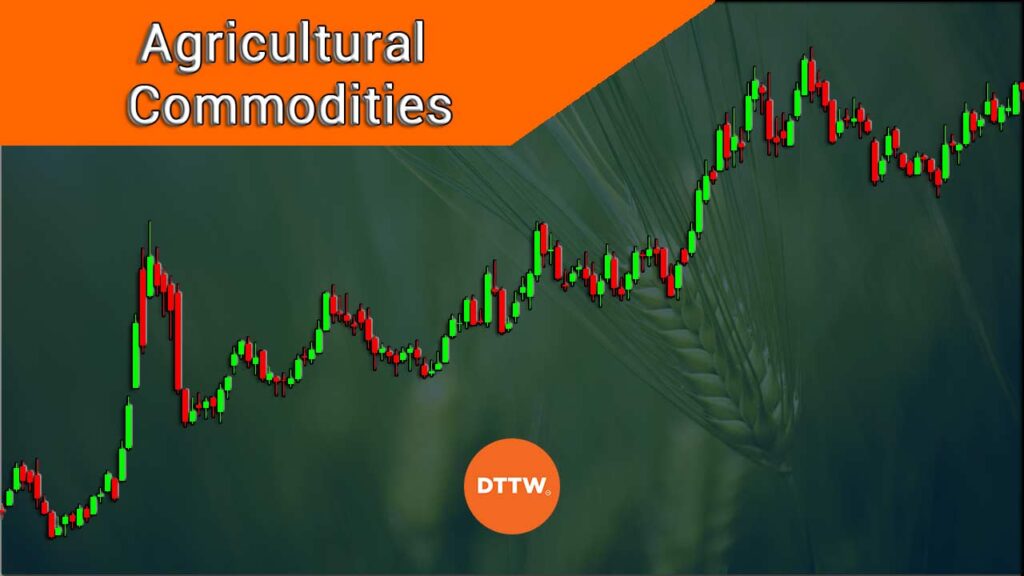Technology has made it possible for people from around the world to get involved in the financial markets. It has also enabled people to trade on complex financial assets that were impossible to trade a few years ago.
Today, it is possible to trade complex derivatives such as weather and interest rates among others.
In this bounty of assets, today is also possible to trade agricultural commodities in the same way we trade other assets like stocks, currencies, and indices.
Table of Contents
Why Agricultural commodities are important
Agricultural commodities like wheat, soybeans, and corn are very important because they are used by people from around the world.
The population has grown to more than 7 billion people, the acreage of agricultural land has declined, the arable land has been affected by increased soil erosion, climate change is affecting the population, and science and innovation has led to more better-quality seeds.
In addition to all this, the world has become more of a global village because of globalization. All these factors have made agricultural commodities play an important role in the world.
A tricky trading
Still, trading agricultural commodities is always a complicated thing, unlike other commodities like crude oil, precious metals, and base metals like copper and iron ore.
This is because the other commodities are produced in large scale by large companies like Glencore, Gazprom, BHP, and Rio Tinto. Agricultural commodities on the other hand are more decentralized. In many places, you will find local farmers growing crops for subsistence use. Agricultural crops are also very subsidized by local governments.
Examples of top agricultural commodities to trade
There are many agricultural commodities that you can trade. However, most online brokers provide a small number of them because most of them are thinly traded. Let us look at some of the most popular ones to trade:
- Soybeans – Soybeans are popular commodities that are offered by most brokers. They became popular during the trade war between the US and China. While US is the biggest producer, China is the biggest consumer.
- Corn – Corn is another popular agricultural commodity. Corn is not only a popular staple food in most countries, it is also an important energy resource,
- Wheat – Wheat is an important commodity used in the manufacture of flour, which is then used to make bread, pasta, and other items.
- Orange juice – Orange is an important fruit although many brokers don’t offer orange juice as a tradable asset.
- Cotton – Cotton is an agricultural resource used to make clothes and other types of fabric. It is offered by many brokers.
Other popular agricultural commodities you can trade are coffee, cocoa, and rice.
How to trade agricultural commodities
To trade agricultural commodities successfully, traders need to do a few things. First, they need to look at the supply and demand equilibrium. This is also true for other commodities. By this, they need to look at the key suppliers of key agricultural commodities and the countries offering the most demand.
A good example of a commodity that traders can look in this dimension is corn. In developing countries, farmers plant corn mostly for subsistence reasons. In Brazil and the United States on the other hand, farmers plant corn for export purposes. China, Canada, and the European Union are the biggest consumers of corn and soybeans.
» Related: Key points to trade commodities
There are several methods of trading agricultural commodities, including:
- CFDs – Contracts for Differences are assets that track the price of a real asset. When you buy a CFD, you own the commodity indirectly. Most brokers offer these commodities in the form of CFDs.
- Stocks – Another indirect method of trading commodities is to use companies that sell these commodities. The biggest of these firms are known as ABCD. A is for Archer Daniels Midland, B is for Bunge, C is for Cargill, and D is for Dreyfus. Only the first two are publicly traded.
- Futures – Another popular way of trading commodities is to use futures, which are offered by companies like CME and CBOE. These assets are then offered by companies like TastyWorks and Interactive Brokers.
Key areas data
After understanding these dynamics, you should narrow down on the key producing areas. In this, you should learn where these plants are farmed. In the US, they are planted in the plain belts of states like Wisconsin and Oklahoma.
Then, you should understand the weather and the trends in these areas. A good way of getting this information is using the data from the United States Department of Agriculture (USDA).
Every month, the department releases the World Agricultural Supply and Demand Estimates (WASDE). This report provides all the relevant information about all the main agricultural commodities in the world.
Taking time to read the report will help you understand the demand and supply dynamics. However, since this report is available to everyone, taking time to read ‘hidden’ news will help you have an edge. An example of ‘hidden news’ is local news and social media accounts of prominent traders or experts in the industry.
» Related: How to do news trading
CFTC
Another important data point is the Commodity Futures Trading Commission’s (CFTC) Commitment of Traders which is released every Tuesday.
The data helps traders understand the dynamics of the markets by providing the ‘open interest for futures and options on futures markets in which 20 or more traders hold positions equal to or above the reporting levels established by the CFTC.’
After learning the issue of demand and supply, you should take time to use technical analysis. This will help you identify entry and exit points.
External useful Resources
- Agricultural Commodities and Market Trends – Commodity.com





